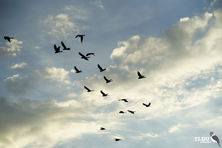
Shoppers Feedback:
Jan 17, 2017
Hello Ros,
I have now paid the invoice, but I would like to write to you just to say a big THANK YOU for getting me the Penguin!
The ChatterMate Penguin became a nice memory for me when I was in New Zealand, and I am so greatful to you for arranging so that I could have it! :-)
Thank you so much!!!!!!!!!!!
Regards,
Malin
Hi Ros,
Many thanks for your very kind email. I really appreciate your prompt reply!
I appreciate your advice regarding the decorations and customs. These are a gift for my daughter’s exchange student family so when she returns home on the weekend I will show her and see if she loves them as much as I do!
Thanks so very much again - I am truly grateful for your kind assistance.
Kind Regards
Bernadette
Ros,
Thanks again for the great customer service. It's a refreshing change!
Best regards,
Trevor
Hey Roz,
Thank you for your emails. Just loved my first order. The cute little Aussie bush critters are going to be used for an office Christmas decoration. My colleagues also liked them and talked about making an order to your site. I'll send you a photo when completed.
I'll be ordering more to send to my daughter's host family in America.
Fabulous service from you.
Kind regards,
Michelle
Thankyou. Order arrived today. One very happy grandson with his new beastly binoculars.
Regards,
Irene
- Home
- Wild Wonders
- Shop
- Aromas of Australia
- Australian Made
- Books
- Book Marks
- Christmas Decoration Sale
- Christmas Decorations
- Clocks
- Drink Holders
- Garden & Outdoor
- Gift Wrapping & Cards
- Home & Giftware
- Jewellery
- Keyrings
- New Products
- Pencils & Pen Holders
- Photo Frames
- Plush Toys
- Plush with Sound
- Sheepskin Rugs
- Stationery
- Stone Carvings
- Toys & Games
- Travel Goods
- Wedding
- Wild Figurines
- Wildlife Safety Products
- Wind Chimes
- Wine Charms
- View All Products
- Wildlife
- Australiana
- Explore
- Contact Us
Yellow-tailed Black Cockatoo

Quick Facts
| Length: | 60 cm |
| Height: | - |
| Weight: | 700 grams |
| Colour: | Mostly black with most body feathers edged yellow, yellow cheek patch and yellow panels on the tail |
| Habitat: | Favours eucalypt woodland and pine plantations |
| Food: | Seeds of native trees and pinecones. Some insects are also eaten |
| Predators: | - |
| Status: | Vulnerable in SA. Secure in NSW, QLD, TAS & VIC. Not Present in WA & NT |
The Yellow-tailed Black-Cockatoo is a large cockatoo. It is easily identified by its mostly black plumage, with most body feathers edged with yellow, not visible at a distance. It has a yellow cheek patch and yellow panels on the tail. The female has a larger yellow cheek patch, pale grey eye-ring (pink in males), white upper bill (grey-black in males) and black marks in the yellow tail panels. Young birds resemble the adult female, but young males have a smaller cheek patch.
Until recently, the Short-billed Black-Cockatoo, found in south-western Australia, was considered a subspecies of the Yellow-tailed Black-Cockatoo. This species has white, instead of yellow, panels in the tail. Another similarly sized black-coloured cockatoo is the Red-tailed Black-Cockatoo. This species overlaps with the range of the Yellow-tailed Black-Cockatoo in south-eastern Queensland. It has red panels in the tail, and spotting on the body and head. The smaller (48 cm) Glossy Black-Cockatoo, also has red panels in the tail.
The Yellow-tailed Black-Cockatoo is found in south-eastern Australia, from Eyre Peninsula, South Australia to south and central eastern Queensland.
The Yellow-tailed Black-Cockatoo inhabits a variety of habitat types, but favours eucalypt woodland and pine plantations. Small to large flocks can be seen in these areas, either perched or flying on slowly flapping wings.
Yellow-tailed Black-Cockatoos feed in small to large, noisy flocks. The favoured food is seeds of native trees and pinecones, but birds also feed on the seeds of ground plants. Some insects are also eaten.
Yellow-tailed Black-Cockatoos have a long breeding season, which varies throughout their range. Both sexes construct the nest, which is a large tree hollow, lined with wood chips. The female alone incubates the eggs, while the male supplies her with food. Usually only one chick survives, and this will stay in the care of its parents for about six months.
Last Updated: Thursday 18th July, 2013
BirdLife Australia - www.birdlife.org.au
BUSH e-TELEGRAPH
Signup for our monthly newsletter the "e-Telegraph"
Quick Links
Home | The Beginning | About The Land Down Under | Wild Wonders | Advertise on Wild Wonders | Christmas Decoration Sale | Christmas Tree Decorations | Drink Holders | Plush with Sound | Stone Carvings | Wildlife Wine Charms | Freebies | Australian Wildlife | Help Our Wildlife | Australiana | Photo of the Month | Explore The Land Down Under | Contact Us | Legal Notices

